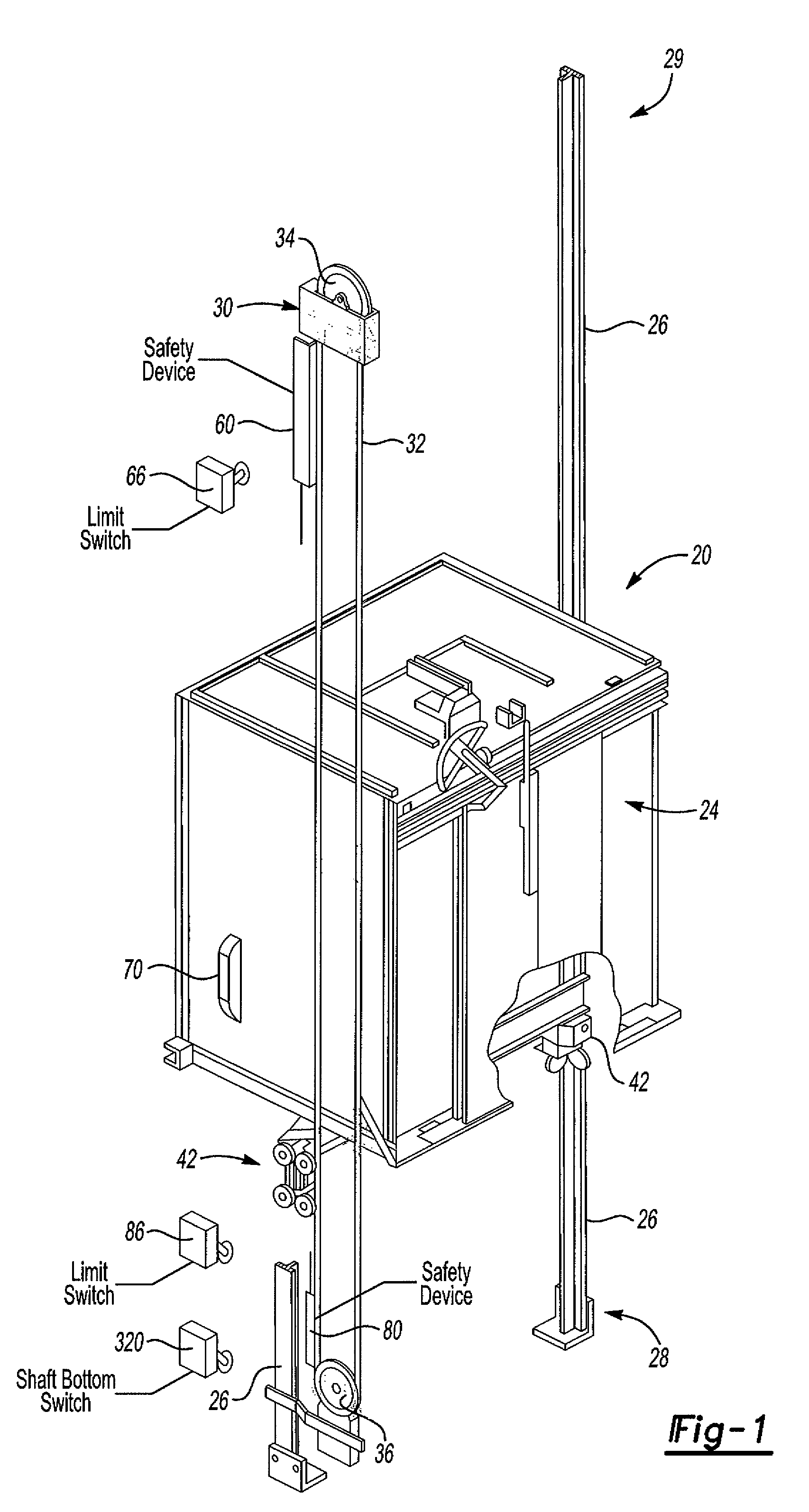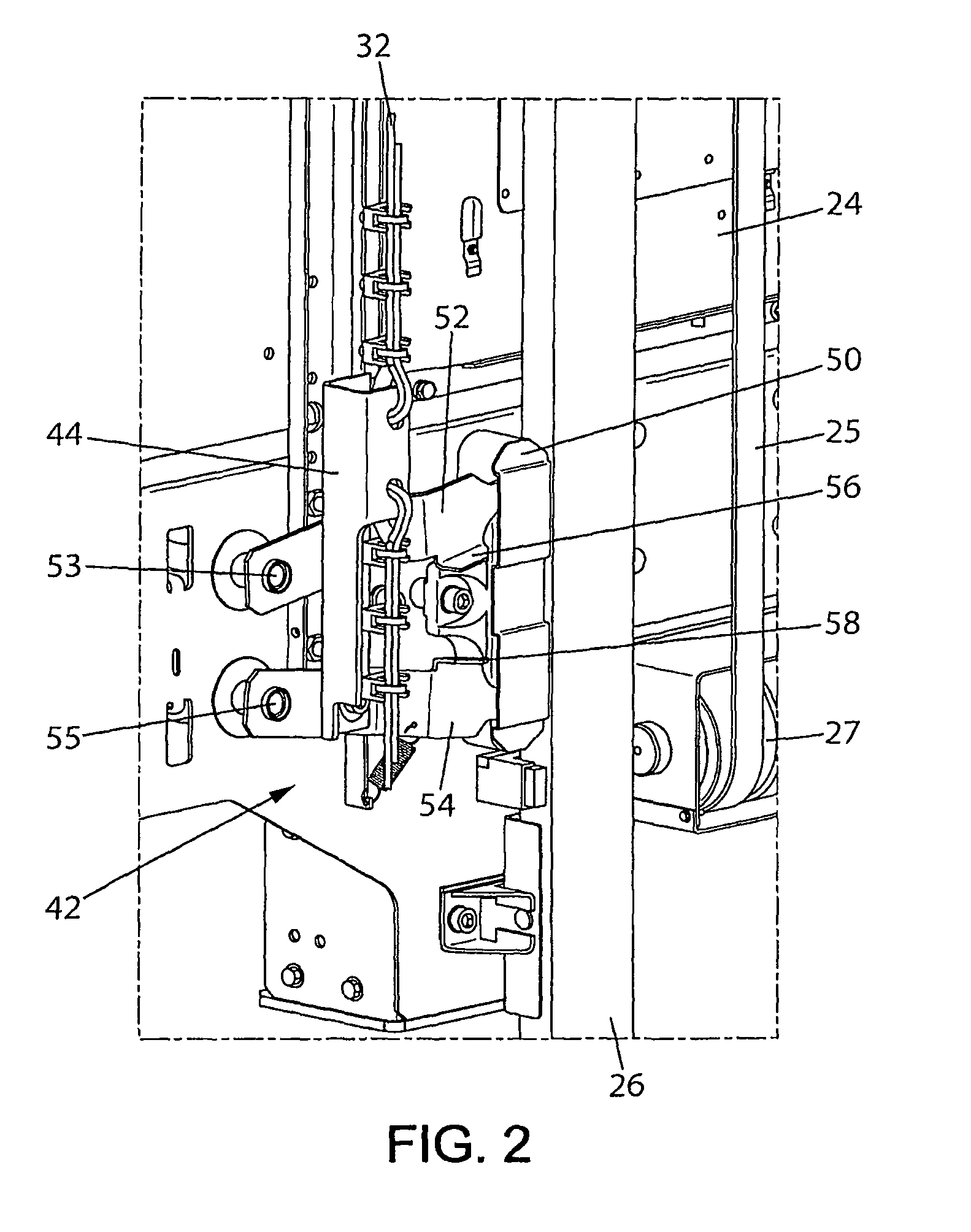Elevator having a limit switch for controlling power to the drive system as an elevator car approaches a shallow pit or a low overhead
a technology of limit switch and drive system, which is applied in the direction of elevators, building lifts, transportation and packaging, etc., can solve the problems of preventing the car from moving further up, reducing the speed of the elevator, and wasting time in movement, so as to achieve a simple and safe arrangement
- Summary
- Abstract
- Description
- Claims
- Application Information
AI Technical Summary
Benefits of technology
Problems solved by technology
Method used
Image
Examples
Embodiment Construction
[0045]FIG. 1 shows an elevator system 20 including an elevator car 24 that moves along guide rails 26 in a known manner.
[0046]In one example, a machine room-less elevator system allows the car 24 to move essentially along the entire length of a hoistway between a lower end 28 (i.e. a pit) and an upper end 29 of a hoistway. A drive system (not shown) including a motor and a brake is conventionally used to control the vertical movements of the car 24 along the hoistway via a traction system partly visible in FIG. 2, including cables or belts 25 and reeving pulleys 27.
[0047]In addition, a governor device 30 controls movement of the car 24 by preventing it from moving beyond a selected maximum speed. The example governor device 30 includes a governor rope 32 that travels with the car 24 as the car moves along the guide rails 26. A governor sheave 34 and a tension sheave 36 are at opposite ends of a loop followed by the governor rope 32.
[0048]The illustrated governor device 30 operates i...
PUM
 Login to View More
Login to View More Abstract
Description
Claims
Application Information
 Login to View More
Login to View More - R&D
- Intellectual Property
- Life Sciences
- Materials
- Tech Scout
- Unparalleled Data Quality
- Higher Quality Content
- 60% Fewer Hallucinations
Browse by: Latest US Patents, China's latest patents, Technical Efficacy Thesaurus, Application Domain, Technology Topic, Popular Technical Reports.
© 2025 PatSnap. All rights reserved.Legal|Privacy policy|Modern Slavery Act Transparency Statement|Sitemap|About US| Contact US: help@patsnap.com



